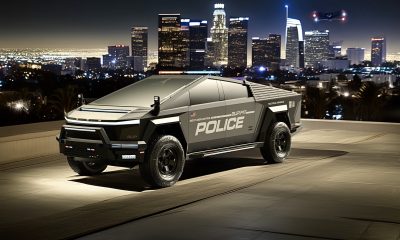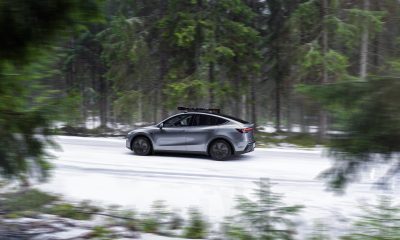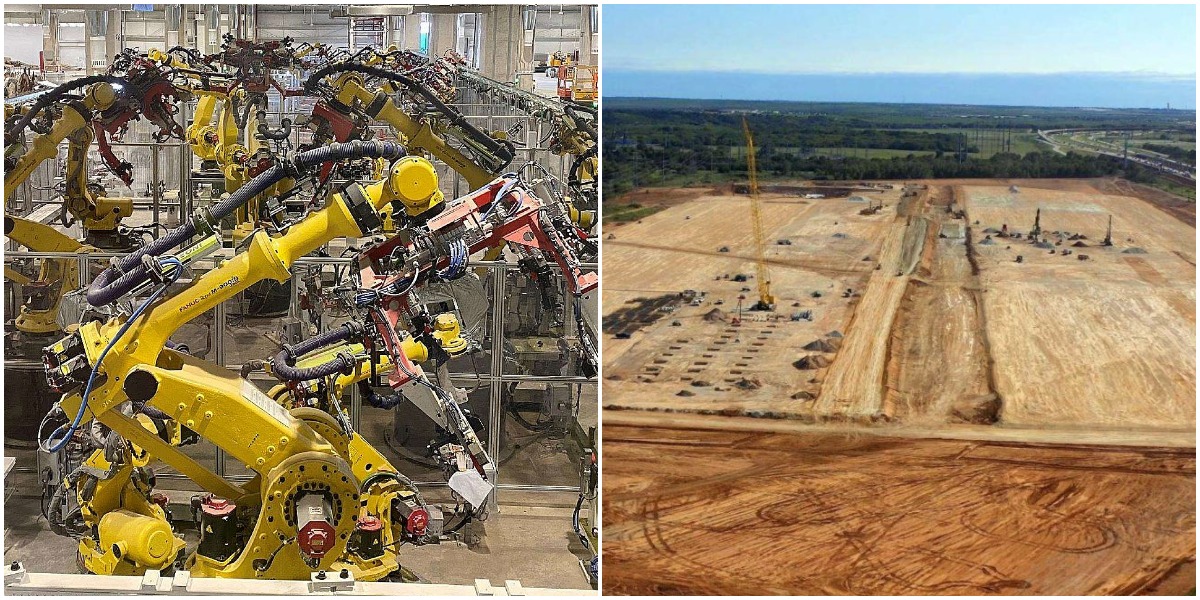

News
Tesla Giga Texas is a clean slate for launching its next-gen manufacturing processes
Tesla’s new Giga Texas facility will the second United States-based location for the all-electric automaker to manufacture its vehicles. With its first being located in Fremont, California, which has been in operation for Tesla since 2010, it may be planning to use its new Texas plant as a “clean slate” for manufacturing testing. With a widespread focus of the company being primarily set on making its vehicles faster, in larger amounts, and with better quality than ever before, a fresh spread of production lines in a new plant that is close to home is ideal for CEO Elon Musk, who announced the Texas plant during the Q2 2020 Earnings Call.
But apart from the new plant, the Q2 2020 Earnings Call included another big piece of information that was repeatedly discussed: manufacturing efficiency. With engineers who can help Tesla solve the manufacturing puzzle in high demand, the automaker can begin to set its sights on reaching a more sizable annual production and delivery rate.
However, it starts with the right personnel, and Tesla is surely searching for some highly-capable individuals who can help introduce new techniques and processes to the supply chain.
Tesla has been seeking individuals to help revolutionize its manufacturing processes. It starts with Giga Texas.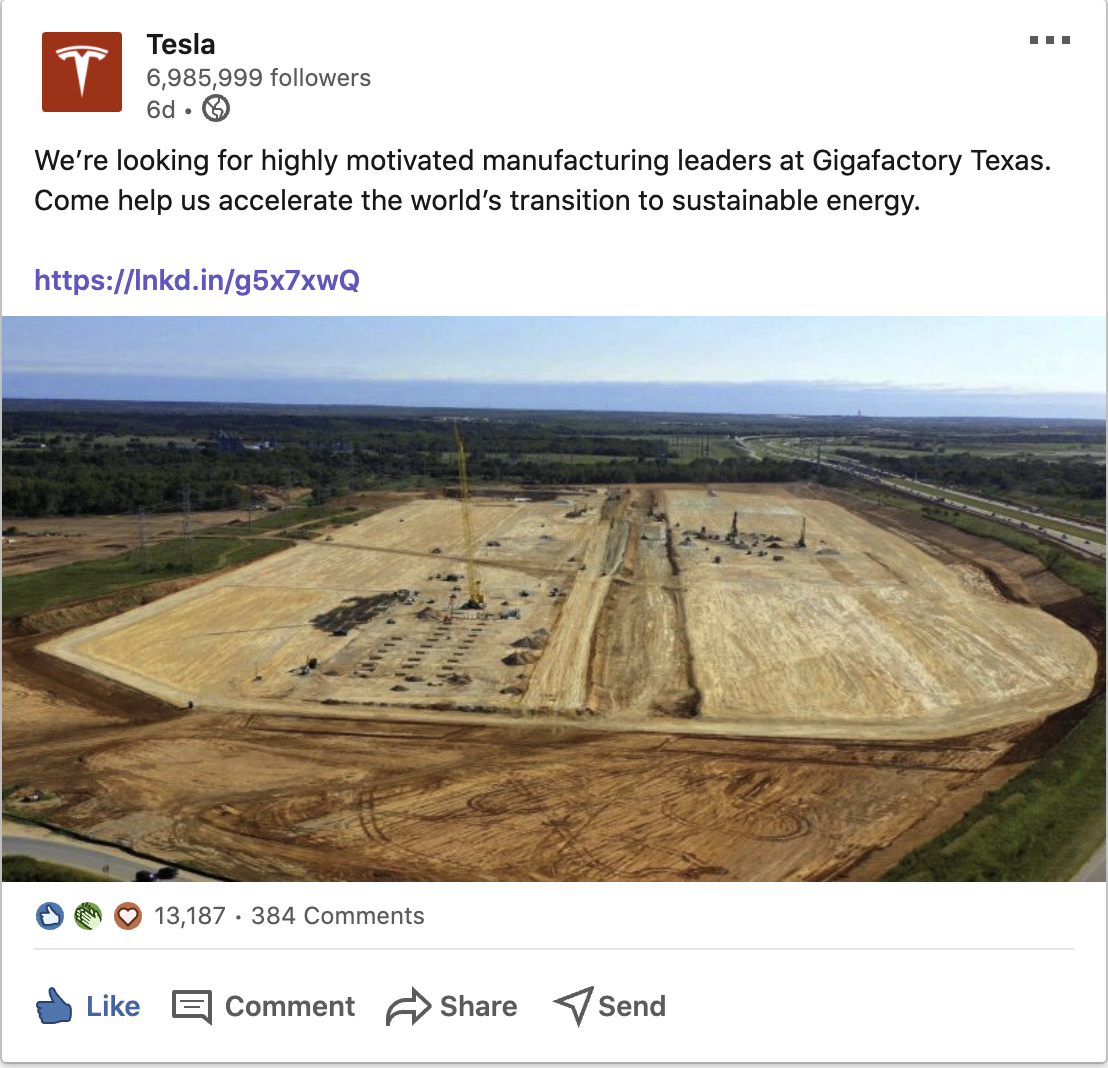
Manufacturing is where Tesla begins its process of delivering a car to a customer. After rounding up all of the material and necessary parts and people, a car can be built on production lines. However, there is always room for improvement, and as demand continues to grow in the face of an ever-changing automotive industry, Tesla needs to adapt. Without a doubt, the company recognizes that the key to keeping up with demand is building vehicles faster than ever before.
Musk, for one, is all-too-familiar with the struggles of building cars. When the Model 3’s introduction of “production hell” brought Tesla to a crossroads in 2017, it was evident that things needed to be solved. More lines and more personnel were brought in, but there is a better strategy than just adding more volume. There is a chance to revolutionize the way cars are built, making the entire process easier, more refined, and better for the company as a whole.
Sheer magnitude of the entire production system is hard to appreciate. Almost every element of production is >75% automated. Only wire harnesses & general assembly, which are <10% of production costs, are primarily manual.
— Elon Musk (@elonmusk) October 12, 2020
For Tesla, manufacturing half-a-million units of the same two cars every year is far from monotonous and repetitive. It is an opportunity to learn.
“…They sort of put manufacturing is like, oh, this is for some boring, just making copies, whatever. But actually, there’s far more opportunity for innovation in manufacturing than in the products itself, order magnitude,” Musk said during the company’s second-quarter Earnings Call. “If you work on manufacturing engineering, but you don’t just get force-fed a sandwich. You get to change the product design. So it’s super exciting.”
A focus on manufacturing has put Tesla at the forefront of automotive technology and design. Musk has even said himself that the company’s long-term sustainable advantage would be manufacturing. Eventually, other automakers will create and build a line of sustainable, functional, and operational EVs. However, Tesla will be able to put themselves ahead of the pack simply because the company’s manufacturing efficiency will be “head and shoulders” above everyone else.
Tesla will be absolutely head and shoulders above anyone else in manufacturing. That is our goal.” -Elon Musk
“Eventually, every car company will have long-range electric cars. Eventually, every company will have autonomy. But not every company will be great at manufacturing. Tesla will be absolutely head and shoulders above anyone else in manufacturing. That is our goal,” Musk said.
The problem is that testing these new techniques and ideas becomes difficult when you have two functional production plants and two others that are being constructed. Without a doubt, trying new things in terms of manufacturing could be detrimental to current lines and could interrupt the much-needed production efforts that are going on currently. So the only way to really test it is to build a new facility and try things on lines that have yet to be used.
This is where Tesla’s advantage lies with Giga Texas. It becomes the perfect place to test new techniques as lines have yet to be built, and none of the company’s current infrastructure is dependent on Giga Texas’ output. Not only is it a fresh start, but it is also close to home, and Musk will have the opportunity to oversee new production and manufacturing methods by simply hopping on his private jet and darting off to the Lone Star State.
Elon Musk giving YouTube tech reviewer Marques Brownlee a tour of the Fremont factory. (Credit: MKBHD/YouTube)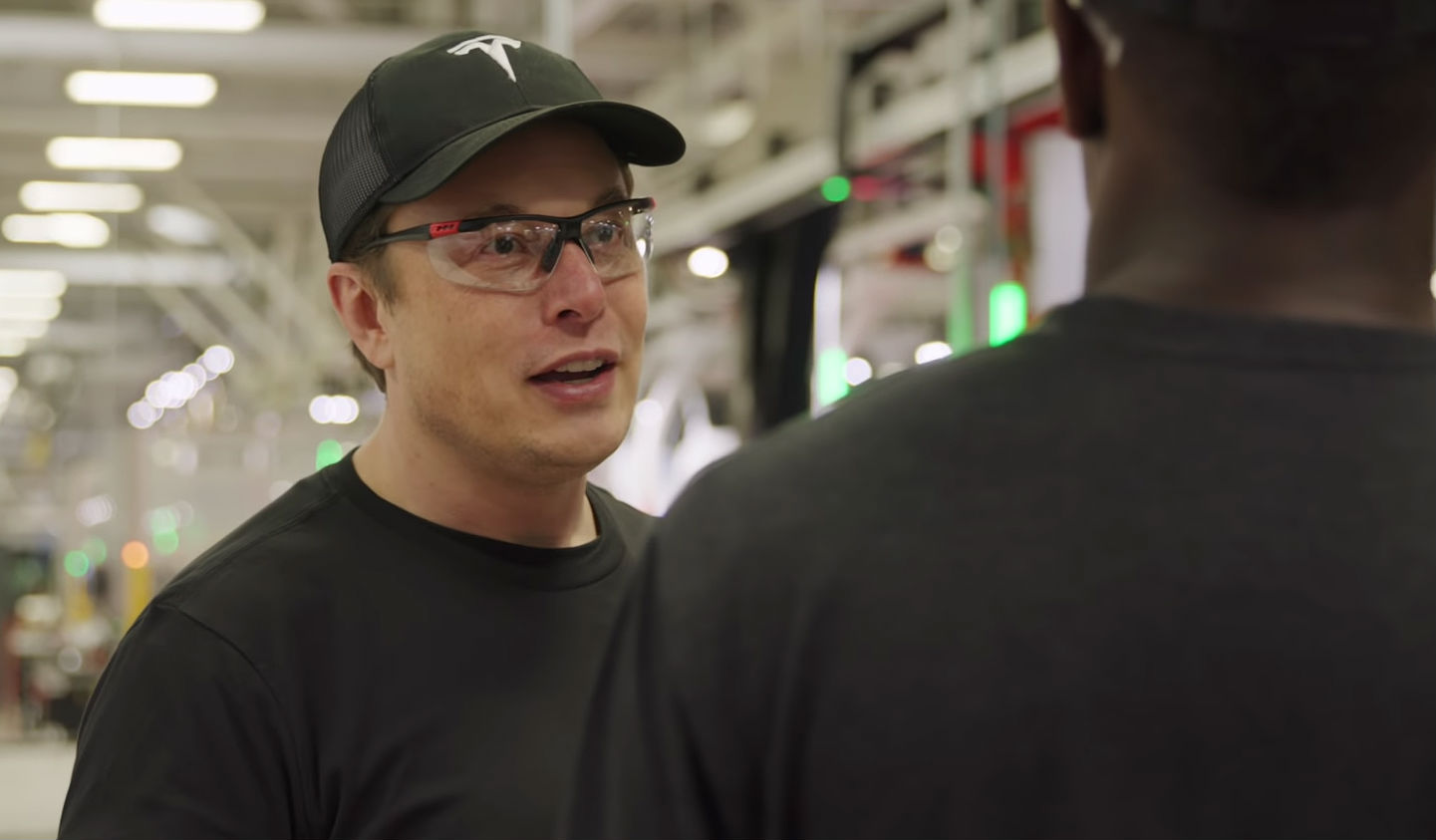
Tesla is currently looking for proven manufacturing leaders to take charge of the Giga Texas plant as well. This job won’t be business as usual or the same monotonous challenges day in and day out. Tesla is looking for a change, and it is dead set on coming up with new ways to make cars efficiently. As the company nears a 1 million vehicle a year production rate, Giga Texas may be the way Tesla sets itself apart from all other car companies by showing new and innovative techniques that could drive the company’s manufacturing practices to become more efficient and groundbreaking for the future.
News
SpaceX’s Crew-11 mission targets July 31 launch amid tight ISS schedule
The flight will lift off from Launch Complex 39A at Kennedy Space Center in Florida.
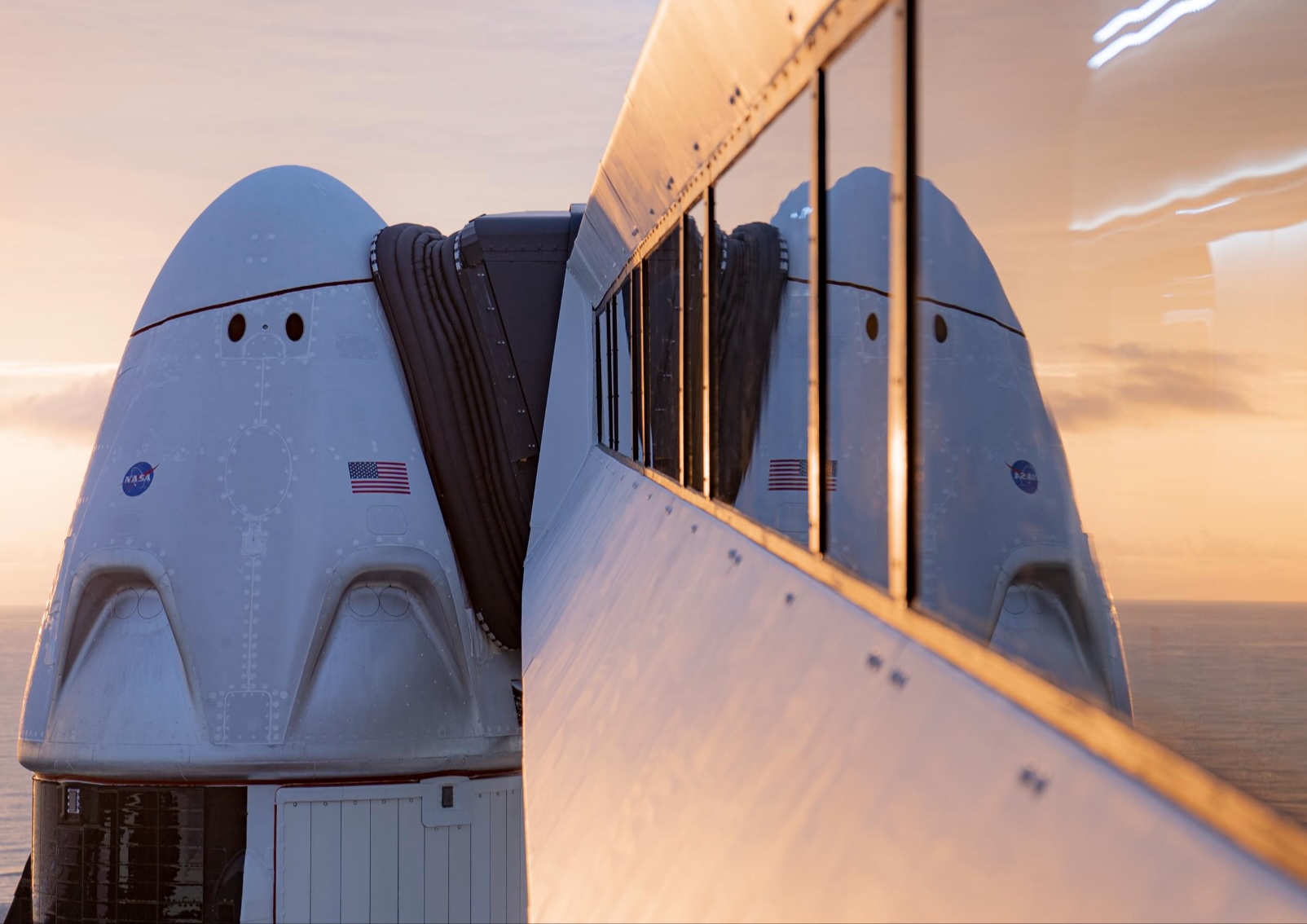
NASA and SpaceX are targeting July 31 for the launch of Crew-11, the next crewed mission to the International Space Station (ISS). The flight will lift off from Launch Complex 39A at Kennedy Space Center in Florida, using the Crew Dragon Endeavour and a Falcon 9 booster.
Crew Dragon Endeavour returns
Crew-11 will be the sixth flight for Endeavour, making it SpaceX’s most experienced crew vehicle to date. According to SpaceX’s director of Dragon mission management, Sarah Walker, Endeavour has already carried 18 astronauts representing eight countries since its first mission with NASA’s Bob Behnken and Doug Hurley in 2020, as noted in an MSN report.
“This Dragon spacecraft has successfully flown 18 crew members representing eight countries to space already, starting with (NASA astronauts) Bob (Behnken) and Doug (Hurley) in 2020, when it returned human spaceflight capabilities to the United States for the first time since the shuttle retired in July of 2011,” Walker said.
For this mission, Endeavour will debut SpaceX’s upgraded drogue 3.1 parachutes, designed to further enhance reentry safety. The parachutes are part of SpaceX’s ongoing improvements to its human-rated spacecraft, and Crew-11 will serve as their first operational test.
The Falcon 9 booster supporting this launch is core B1094, which has launched in two previous Starlink missions, as well as the private Ax-4 mission on June 25, as noted in a Space.com report.
The four-members of Crew-11 are NASA astronauts Zena Cardman and Mike Fincke, as well as Japan’s Kimiya Yui and Russia’s Oleg Platonov.
Tight launch timing
Crew-11 is slated to arrive at the ISS just as NASA coordinates a sequence of missions, including the departure of Crew-10 and the arrival of SpaceX’s CRS-33 mission. NASA’s Bill Spetch emphasized the need for careful planning amid limited launch resources, noting the importance of maintaining station altitude and resupply cadence.
“Providing multiple methods for us to maintain the station altitude is critically important as we continue to operate and get the most use out of our limited launch resources that we do have. We’re really looking forward to demonstrating that capability with (CRS-33) showing up after we get through the Crew-11 and Crew-10 handover,” Spetch stated.
Lifestyle
EV fans urge Tesla to acquire Unplugged Performance for edge in fleet and security industry
Unplugged Performance has built a name for itself by producing performance upgrades for Tesla vehicles.
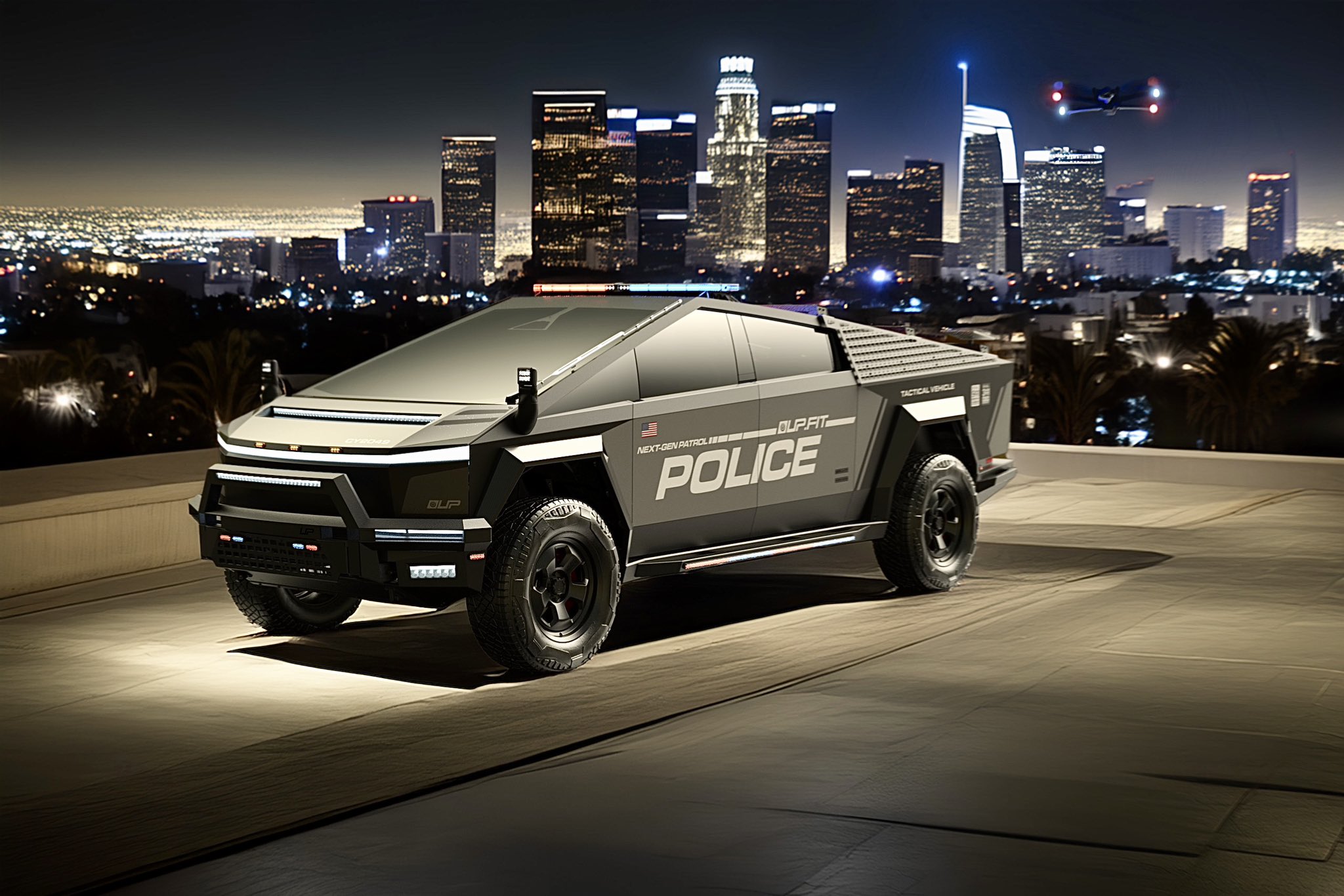
A growing number of Tesla enthusiasts and longtime community voices are calling on the electric vehicle maker to acquire Unplugged Performance, a California-based aftermarket company best known for tuning Tesla vehicles and developing specialized government fleet solutions under its UP.FIT division.
The idea was once considered a niche proposal among EV fans, but it is now gaining serious attention not just as a performance play but as a strategic move to deepen Tesla’s roots in the fleet and security industry.
A strategic fit
Unplugged Performance has built a name for itself by producing performance upgrades for Tesla vehicles, from track-optimized components to visual and aerodynamic upgrades. But in recent years, its UP.FIT division has pivoted toward a more functional future by outfitting Tesla vehicles like Model Ys for police, military, and government use.
That work has sparked growing calls for closer collaboration with Tesla, especially as the EV maker increasingly leans into autonomy, AI, and fleet services as core components of its next chapter.
“I posted this four years ago, but I think it’s more true now than ever,” wrote Whole Mars Catalog, a well-known Tesla investor and FSD Beta tester, on X. “Tesla should buy Unplugged. But not just as a Performance division. What they are doing with UP.FIT unlocks large government and commercial fleet purchases that can improve utilization.”
Tesla fans such as shareholder Sawyer Merritt echoed the sentiment, calling Unplugged a “great fit within Tesla.” adding, “They are literally located directly next to Tesla’s design studio in Hawthorne.”
Enabling the next wave
Supporters of the idea noted that integrating Unplugged into Tesla’s corporate structure could help accelerate the adoption of autonomous technologies in government sectors. With UP.FIT patrol cars already in use across some U.S. police departments, Tesla fans envisioned a future where self-driving Teslas could potentially revolutionize law enforcement, search-and-rescue, and public service logistics.
“Just imagine how autonomous patrol cars could transform policing and bring us into a safer future,” the veteran FSD tester wrote.
The benefits could also extend to Tesla’s existing consumer base. “They also have some incredible products in the works that I think will appeal to many ordinary Tesla drivers — not just those looking for performance or mods. Stuff that’s so good it should have come straight from the design studio next door,” Whole Mars Catalog noted.
Unplugged Performance, founded in 2013, shares not just a product vision with Tesla, but also geography. Its Hawthorne headquarters sits directly adjacent to Tesla’s design studio, and the two companies have maintained a close working relationship over the years. The aftermarket firm has long positioned itself as a “mission-aligned” partner to Tesla.
In response to the recent calls for acquisition, Unplugged Performance acknowledged the support from the community. “Our very existence is to support the Tesla mission with @UpfitTesla and @UnpluggedTesla,” Unplugged CEO Ben Schaffer posted on X. “We love working with Tesla and are grateful for the community’s support since 2013!”
News
Tesla debuts hands-free Grok AI with update 2025.26: What you need to know
All new Tesla vehicles delivered on or after July 12, 2025, will include Grok AI out of the box

Tesla has begun rolling out Grok, an in-car conversational AI assistant developed by xAI, to eligible vehicles starting July 12. The feature marks the most direct integration yet between Elon Musk’s artificial intelligence startup and Tesla’s consumer product lineup, offering drivers hands-free access to a chat-style companion while on the road.
Grok comes pre-installed on new vehicles
According to Tesla’s FAQ page for the feature, all new vehicles delivered on or after July 12, 2025, will include Grok AI out of the box. Owners of older vehicles may gain access through an over-the-air update, provided their vehicle meets a few hardware and software requirements.
Specifically, Grok is currently only supported on Tesla models equipped with an AMD infotainment processor and running vehicle software version 2025.26 and higher. Compatible models include the Model S, Model 3, Model X, Model Y, and Cybertruck. A Premium Connectivity subscription or active Wi-Fi connection is also required.
Tesla notes that additional vehicle compatibility may arrive in future software updates.
Grok’s features and limitations for now
Drivers can engage with Grok using the App Launcher or by pressing and holding the voice command button on the steering wheel. Grok is designed to answer questions and hold conversations using natural language, offering responses tailored to its chosen personality—ranging from “Storyteller” to the more eccentric “Unhinged.”
For fun, Tesla posted a demonstration of Grok likely running on “Unhinged” talking about what it would do to Optimus when they are on a date, much to the shock of the humanoid robot’s official social media account.
It should be noted, however, that Grok cannot currently issue commands to the vehicle itself, at least for now. Traditional voice commands for tasks like climate control, navigation, or media remain separate from Grok as of writing.
The feature is being released in Beta and does not require a Grok account or xAI subscription to activate, although that policy may change over time.
Grok privacy and in-car experience
Tesla emphasizes that interactions with Grok are securely processed by xAI and not linked to a user’s Tesla account or vehicle. Conversations remain anonymous unless a user signs into Grok separately to sync their history across devices.
Tesla has also begun promoting Grok directly on its official vehicle webpages, showcasing the feature as part of its in-car experience, further highlighting the company’s increasing focus on AI and infotainment features on its all-electric vehicles.
-

 Elon Musk2 weeks ago
Elon Musk2 weeks agoTesla investors will be shocked by Jim Cramer’s latest assessment
-

 Elon Musk3 days ago
Elon Musk3 days agoxAI launches Grok 4 with new $300/month SuperGrok Heavy subscription
-

 Elon Musk5 days ago
Elon Musk5 days agoElon Musk confirms Grok 4 launch on July 9 with livestream event
-

 News1 week ago
News1 week agoTesla Model 3 ranks as the safest new car in Europe for 2025, per Euro NCAP tests
-

 Elon Musk1 week ago
Elon Musk1 week agoxAI’s Memphis data center receives air permit despite community criticism
-

 News2 weeks ago
News2 weeks agoXiaomi CEO congratulates Tesla on first FSD delivery: “We have to continue learning!”
-

 News2 weeks ago
News2 weeks agoTesla sees explosive sales growth in UK, Spain, and Netherlands in June
-

 Elon Musk2 weeks ago
Elon Musk2 weeks agoTesla scrambles after Musk sidekick exit, CEO takes over sales


